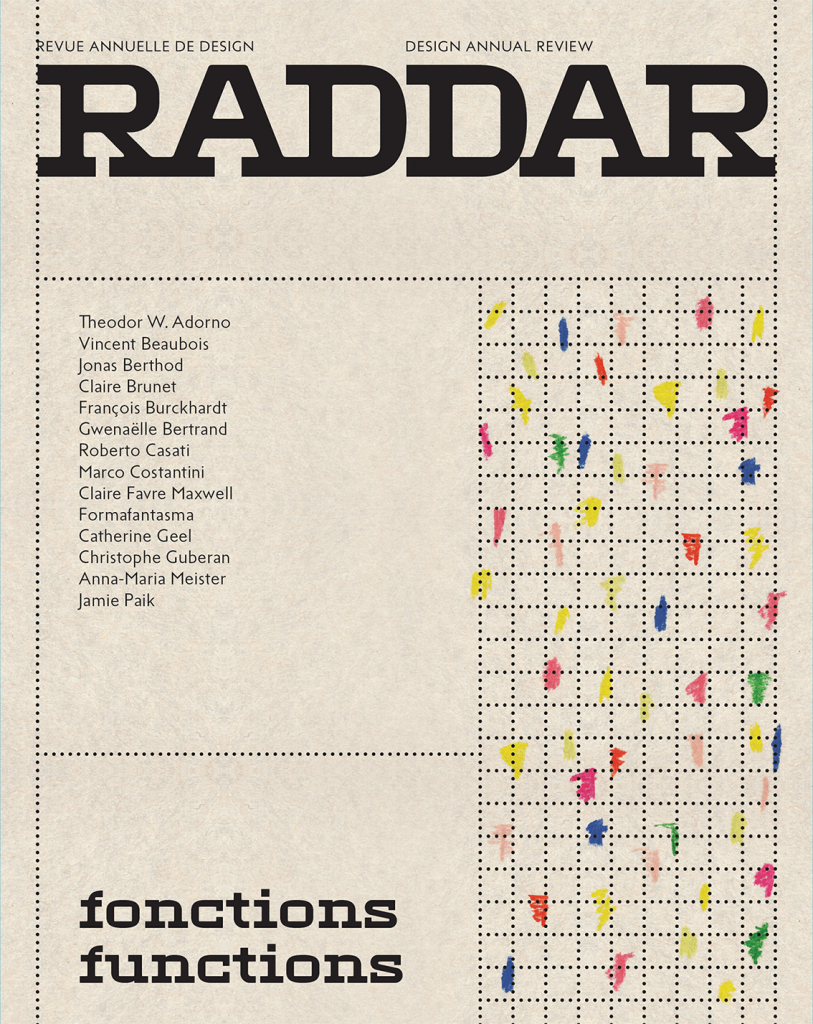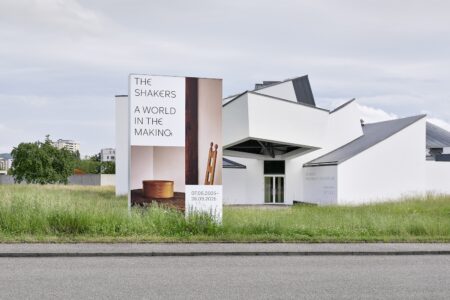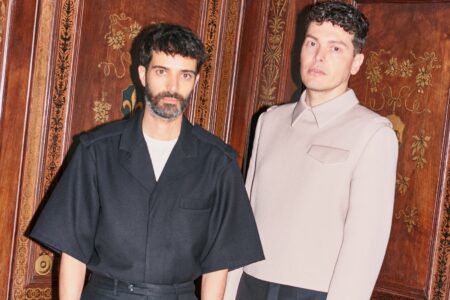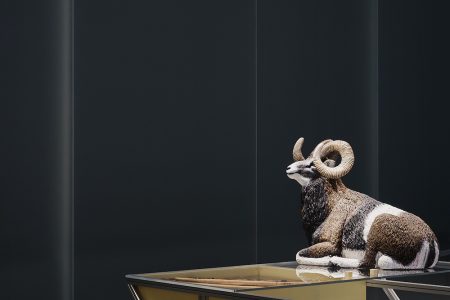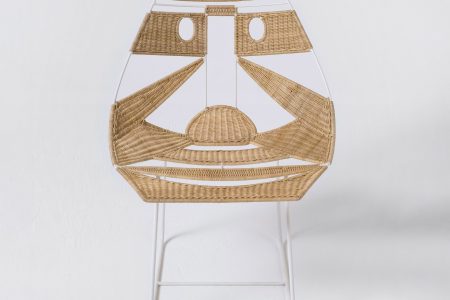RADDAR: Exploring Essential Themes of Design
A new design research magazine is launched by Mudac and T&P Unit. TLmagazine speaks with its editor-in-chief Claire Faivre Maxwell.
Mudac and T&P Unit published a new, annual design research magazine RADDAR. It is a platform for both young and experienced researchers, to express themselves on subjects relevant to design theory.
Specialists from diverse fields of study are invited to express their views on the subject. The first issue of RADDAR is devoted to design functions, a fundamental concept within the discipline. TLmag speaks to its editor-in-chief Claire Faivre Maxwell about the creation of this brand new design research magazine.
TLmag: could you elaborate on the initial reason for the creation of the magazine RADDAR?
Claire Favre Maxwell: The missions of a museum are to promote the object of their discipline and to do research on them. At Mudac, we research mostly on contemporary design but we are very aware of what was created by designers in the past, the links, and references that can exist between the objects. Design is a broad discipline, very stimulating, with a lot happening. Many designers work in very different fields and in different ways, which is not always easy to show in the context of exhibitions. For us, to decide to publish a research review gives us the opportunity to broaden our research in the field and to deal with subjects that could not be easily be dealt with in the context of an exhibition.
TLmag: what is RADDAR bound to explore, discover and/or communicate?
CFM: RADDAR wants to explore different essential themes of design and examine their urgency in our contemporary context. In the first issue, we examined the notion of function, which is so often associated to design. From the different articles published in the review, it is clear that there are several functions and not only one. The function is a constraint that designers have worked with, fought against, tried to deviate. It is a pillar of a designer’s work and as such, it was important to start with this subject. RADDAR 2 will be devoted to the theme of Space and Place.
The review is published in French and English because we have noted that researchers from those languages quite often ignore each other. As a museum, turned towards the public, it was important for us to created this bridge between the two languages and to act as a sort of platform to encourage researchers of different languages to get to know each other.
With RADDAR we want to collaborate with researchers from different disciplines and see how they analyze design. Of course we will publish articles by design historians and design theorists, but we would also like to invite sociologists, philosophers or scientists to talk about design. We want to invite specialists of their fields and also younger researchers who can give their more recent point of view on different subjects.
TLmag: As assistant director of MUDAC you must have elaborate experience in curating design. In what way will you curate the magazine?
CFM: The editing of the magazine was not made by me only but by an editorial board composed of Chantal Prod’Hom, director of Mudac, Marco Costantini, curator at Mudac and Catherine Geel and Marie Lejault from the French publishing house T&P Work Unit.
As a museum specializing in applied arts, graphic design is really important to us. We wanted the review to be aesthetically attractive, to avoid the austere look that some research reviews can sometimes have and to try and reach a broader audience.
We have worked with graphic designer Julien Mercier, a young designer who studied at ECAL in Lausanne and who specializes in fonts. He developed a really astute system where the size of French paragraphs corresponds almost exactly with that of English ones so that you can read the two languages almost in parallel.
The cover of the book is also really special. It unfolds like an accordion into 6 pages. We asked Formafantasma to design a special cover for this first issue. They came up with a very subtle vision of function: to work on the different usages of paper. So you can detach bits of the cover and turn them into confetti, a bookmark, a postcard, etc. Their answer to this first theme of the function was very clever and witty, we thought.
TLmag: In what sense, would you say, are MUDAC and RADDAR connected?
RADDAR is connected to Mudac because it corresponds to the curiosity that Mudac has always shown toward design. It acts as a tool to make design known to readers and it a way to elaborate on our passion for this subject.
Portrait: Francesca Palazzi
